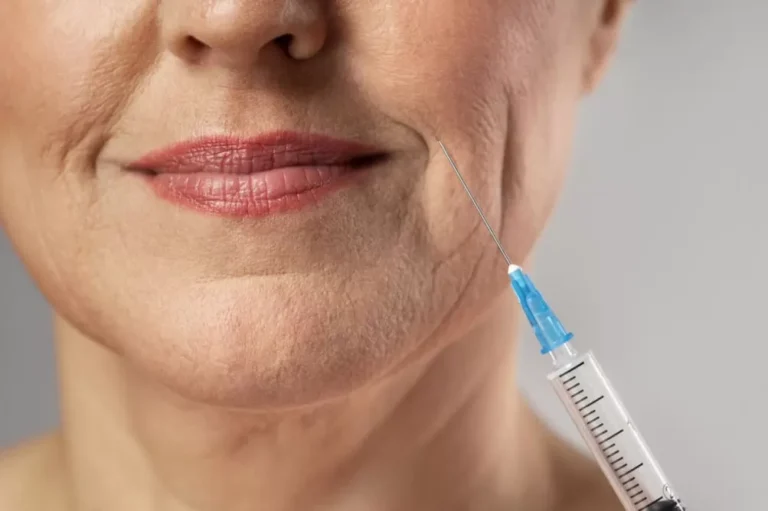Botox Therapy

Botox, or Botulinum Toxin, is a popular cosmetic treatment used to reduce the appearance of facial wrinkles and fine lines. It is a neurotoxic protein produced by the bacterium Clostridium botulinum, and when used in cosmetic procedures, it temporarily paralyzes muscles, leading to a smoother and more youthful-looking complexion. Botox injections are administered by qualified healthcare professionals, typically dermatologists or plastic surgeons, and are one of the most common non-surgical cosmetic procedures worldwide. Here’s a detailed overview of Botox treatment in cosmetics:
How Botox Works:
1. Muscle Relaxation:
– Botox works by temporarily blocking nerve signals to specific muscles in the treated area.– When injected, it inhibits the release of acetylcholine, a neurotransmitter responsible for muscle contractions.
2. Temporary Paralysis:
– The temporary paralysis of the targeted muscles results in a reduction or elimination of dynamic wrinkles—those caused by repetitive facial movements such as frowning, squinting, or smiling.3. Preventing Wrinkle Formation:
– By inhibiting muscle contractions, Botox prevents the formation of new wrinkles and softens existing ones, providing a smoother appearance to the skin.Common Areas Treated with Botox:
1. Glabellar Lines (Frown Lines):
– The vertical lines between the eyebrows that form when frowning.2. Forehead Lines:
– Horizontal lines on the forehead that appear with expressions like raising the eyebrows.3. Crow’s Feet:
– Lines that radiate from the corners of the eyes, often caused by smiling or squinting.4. Bunny Lines:
– Lines that appear on the nose when scrunching the nose, often seen when smiling or laughing.5. Chin Dimpling:
– Dimpling or puckering of the chin, particularly noticeable during facial expressions.6. Jawline Contouring (Masseter Reduction):
– Botox can be used to slim and contour the jawline by reducing the size of the masseter muscles.Botox Treatment Procedure:
1. Consultation:
– A consultation with a qualified healthcare professional is essential to assess the patient’s concerns, expectations, and overall health.2. Mapping Treatment Areas:
– The professional identifies specific areas for Botox injections based on the patient’s facial anatomy and desired outcomes.3. Cleansing and Anesthesia:
– The treatment area is cleansed, and a topical anesthetic may be applied to minimize discomfort during the procedure.4. Botox Injections:
– Botox is injected directly into the targeted muscles using a fine needle. Multiple injections may be administered in a single session.5. Post-Treatment Care:
– After the procedure, patients are advised to avoid rubbing or massaging the treated areas and to refrain from strenuous activities for the remainder of the day.Results and Duration:
1. Onset of Results:
– Patients may start noticing the effects of Botox within a few days after the injections, with optimal results appearing within 1 to 2 weeks.2. Duration of Effect:
– The effects of Botox are temporary and typically last for about 3 to 6 months, depending on individual factors such as metabolism and muscle activity.3. Maintenance Sessions:
– To maintain the desired results, patients may need periodic Botox treatments.Considerations and Safety:
1. Qualified Professionals:
– Botox injections should only be administered by qualified healthcare professionals Dr. Sayali. She has experience in cosmetic procedures.2. Individualized Treatment:
– Each Botox treatment is tailored to the individual’s facial anatomy and desired outcomes, ensuring natural-looking results.3. Possible Side Effects:
– Common side effects may include temporary bruising, redness, or swelling at the injection sites. Serious complications are rare when administered by trained professionals.4. Avoiding Overuse:
– Overuse of Botox may lead to a frozen or unnatural appearance. Skilled professionals aim for a balanced and natural look.5. Not Suitable for Everyone:
– Botox may not be suitable for individuals with certain medical conditions or allergies. Pregnant or breastfeeding women should consult their healthcare provider before considering Botox.Beyond Cosmetic Use:
While Botox is widely known for its cosmetic applications, it is also used for various medical purposes, including treating certain medical conditions such as chronic migraines, excessive sweating (hyperhidrosis), muscle spasms, and even certain neurological disorders.
Botox treatment in cosmetics has become a popular and effective option for individuals seeking a non-invasive solution to reduce the appearance of facial wrinkles. A personalized consultation with a qualified healthcare professional is crucial to assess individual needs, discuss realistic expectations, and determine the most appropriate treatment plan.
